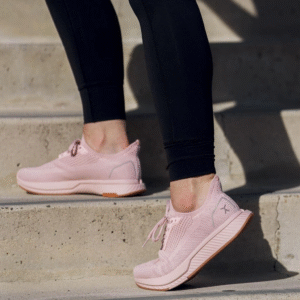Pain management is filled with advice, some of it helpful, some confusing, and some downright misleading. If you’ve ever wondered whether taking long walks or alternating between ice and heat packs is helping your pain, you’re not alone. There’s a lot of nuance when it comes to healing, and even the most common wellness routines can have hidden drawbacks when not done correctly.
For many people, walking feels like the safest and most accessible way to stay active. It doesn’t require a gym membership, fancy equipment, or advanced technique. Just lace up your shoes and get moving. But while walking is often praised for its cardiovascular benefits, not everyone realizes that walking without postural strength can lead to increased discomfort in the back, knees, and hips.
Another hotly debated topic is the use of heat or ice for relief. Some people swear by ice after every flare-up. Others won’t touch a cold pack and use only heat to soothe their muscles. But is one better than the other? The answer might surprise you, and it’s a reminder that personalization is key to managing pain safely and effectively.
Walking Isn’t a Cure-All (If Posture Is Ignored)
Walking is commonly recommended as a safe, moderate exercise for older adults, those recovering from injury, or individuals dealing with chronic joint pain. And while this is generally true, there’s one major factor that’s often left out of the conversation: postural strength.
When the muscles in your pelvis, lower back, and upper back aren’t strong or engaged properly, walking even in small doses can lead to long-term issues. Many people unknowingly adopt poor walking habits that involve:
- Slouching
- Forward-tilted pelvis
- Limited core engagement
- Weak gluteal and lumbar support
These biomechanical imbalances can place excessive strain on the spine, hips, and knees, ironically leading to the very discomfort that walking is meant to relieve. The longer the walk, the more exaggerated the issues can become. Over time, this can result in joint irritation, lower back tightness, and even shooting nerve pain in some individuals.
To walk in a way that supports healing, it’s essential to incorporate core and postural exercises into your weekly routine. These could include pelvic tilts, glute bridges, upper back retractions, and other simple movements that promote muscular balance. Working with a physical therapist or posture specialist can be incredibly helpful in developing a plan tailored to your body’s needs.
Walking Too Much Can Backfire
It’s tempting to treat walking like a “set-it-and-forget-it” activity. Many people set step goals and push to hit 8,000 or even 10,000 steps per day. But for individuals experiencing pain or instability, more steps aren’t always better.
When posture breaks down during long walks, the repetitive motion can begin to:
- Aggravate pre-existing injuries
- Tighten hip flexors and hamstrings
- Compress spinal discs
- Causes joint inflammation
If your body starts to compensate during your walks, that’s a red flag. For instance, if your shoulders are rounding forward, or your back feels sore afterward, you’re likely engaging the wrong muscle groups or not enough of the right ones.
Rather than pushing to meet arbitrary step goals, it’s better to focus on short, mindful walks, ideally after doing some light mobility work. Quality over quantity should be the mindset when using walking as part of your recovery or wellness strategy.
Heat vs. Ice: What Works?
If you’ve ever asked, “Should I use ice or heat for this pain?” you’re asking the right question, but there’s no universal answer.
Most people are taught to use ice for acute injuries (like swelling in the ankle after a twist) and heat for muscular tension (like tight shoulders or a sore back). While this logic is widely accepted, research shows that neither heat nor ice has been definitively proven to be superior across all conditions.
That means the best approach may come down to personal response. If applying ice numbs your pain and helps with swelling, great. If a warm compress makes your muscles feel looser and more mobile, that’s equally valid. There’s no harm in experimenting with both to see what works best for your body.
That said, it’s important to apply these therapies safely:
- Ice: Best used in short durations (15–20 minutes), wrapped in a towel to avoid skin damage. Ideal for inflammation and new injuries.
- Heat: Should be warm, not hot. Apply for 20–30 minutes to soothe tension or muscle stiffness. Not ideal for swelling or new injuries.
For chronic conditions, alternating between the two may even be beneficial, depending on your symptoms. But the main takeaway is this: if a particular method helps you feel better, it’s worth using. Just be mindful of signs that indicate worsening inflammation, such as increased swelling, sharp pain, or stiffness after treatment.
Listen to Your Body, Not Just the Trends
In today’s information-saturated world, it’s easy to follow health trends without fully understanding the science or how those routines apply to your unique physiology. While walking and thermal therapies are generally safe, they aren’t miracle fixes, and they can cause setbacks if used improperly.
The key to healing is self-awareness. Are your muscles supporting your joints during exercise? Are you listening to how your body responds to heat or cold? Are you doing what works for you, or what you’ve been told should work?
Healing is personal. There’s no perfect formula, but there are better questions to ask and better ways to tune into your body’s feedback.
Want more insight? In a recent video, Dr. Mohammad Aalai shares the full discussion on posture, pain relief strategies, and what works for long-term healing. It’s a must-watch for anyone managing chronic pain or reevaluating their self-care routine.







